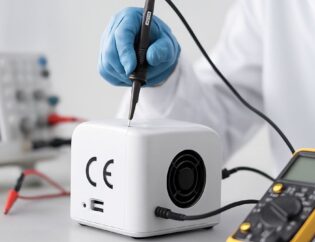
Which Products Must Carry the CE Mark? A Detailed Guide
One of the most important elements that ensures the free movement of products within the European Union (EU) is the CE mark. However, this mark is not mandatory for all products. Some products are required to bear the CE mark, while for others this requirement does not apply.
In this article, you can find detailed information about the products that must carry the CE mark and the related directives.
For Which Products Is the CE Mark Mandatory?
The CE mark is mandatory for specific product categories defined by the European Union. These products are generally those that pose potential risks to human health, safety, and environmental protection.
Here are the main product groups that must carry the CE mark:
- Machinery and Equipment – Machinery Directive (2006/42/EC)
- Examples: Industrial machines, agricultural equipment, conveyor systems, packaging machines, extrusion machines.
- Electrical and Electronic Products – LVD and EMC Directives
- Examples: Household appliances, computers, LED lamps, televisions, chargers.
- Medical Devices – Medical Devices Regulation (2017/745)
- Examples: X-ray machines, implants, prosthetics, test kits, blood pressure monitors.
- Toys – Toy Safety Directive (2009/48/EC)
- Examples: Baby toys, puzzles, play dough, remote-controlled cars.
- Construction Products – CPR Regulation (305/2011)
- Examples: Cement, steel structural elements, insulation materials, windows, doors.
- Pressure Equipment – Pressure Equipment Directive (2014/68/EU)
- Examples: Boilers, pressure tanks, gas cylinders, compressors.
- Personal Protective Equipment (PPE) – Directive (2016/425)
- Examples: Helmets, safety goggles, steel-toe shoes, dust masks.
- Gas Appliances – Directive (2016/426)
- Examples: Boilers, gas stoves, water heaters, gas fireplaces.
- Lifts – Directive (2014/33/EU)
- Examples: Passenger lifts, freight elevators, rescue lifts.
- Cableway Installations – Directive (2016/424)
- Examples: Cable cars, chairlifts, gondola systems.
- Equipment for Use in Explosive Atmospheres (ATEX) – Directive (2014/34/EU)
- Examples: Gas detectors, flameproof motors, explosion-proof lamps.
- Civil Explosives – Directive (2014/28/EU)
- Examples: Construction dynamite, pyrotechnic devices, blasting initiators.
- Marine Equipment – Directive (2014/90/EU)
- Examples: Lifeboats, fire-fighting equipment, marine radar.
- Outdoor Equipment with Noise Emissions – Directive (2000/14/EC)
- Examples: Lawn mowers, chainsaws, street sweepers.
- Hot Water Boilers – Directive (92/42/EEC)
- Examples: Central heating boilers, steam boilers.
- Pyrotechnic Articles – Directive (2013/29/EU)
- Examples: Fireworks, signal flares, stage effects.
- Weighing Instruments – Directive (2014/31/EU)
- Examples: Laboratory scales, commercial scales, industrial weighing systems.
- Measuring Instruments (MID) – Directive (2014/32/EU)
- Examples: Water meters, gas meters, electricity meters, taximeters.
- Radio Equipment – Directive (2014/53/EU)
- Examples: Wireless routers, radios, Bluetooth headsets, GPS devices.
Why Is the CE Mark Important?
- Ensures free movement of products in the European market.
- Demonstrates product safety and compliance.
- Increases consumer trust.
- Provides advantages in export processes.
The CE mark is a critical requirement for manufacturers who want to enter the European market. Knowing which products are required to carry this mark is essential for both legal compliance and international trade.
By checking whether your product falls under the CE marking scope, you can plan your compliance journey for the European market.









